- HOME
- Technical Information
- CAE Analysis, Analysis and Processing Technologies
- Analysis Technologies
- Fracture Analysis
Fracture Analysis
There is always a reason why something fractures. In order to discover this reason, we observe the shapes that appear on the fracture surface, read and understand these phenomena, and analyze them. This process is called fracture analysis.
There are many different types of fractures and shapes that appear on fracture surfaces, but when it comes to resin materials, the most common types are ductile fractures, brittle fractures, fatigue fractures, creep ruptures and solvent cracking. Scanning electron microscopes (SEMs) are used to observe the fracture surface.
Ⅰ. Ductile fractures
・Large deformation of the resin causes fracturing.
・The characteristic shape of the fracture surface is called the dimple pattern.
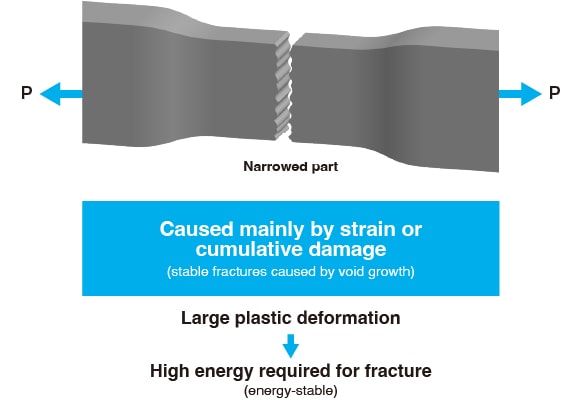
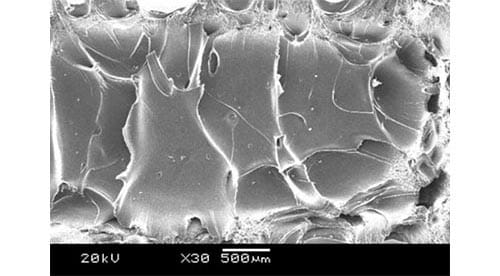
Ductile fractures
Ⅱ. Brittle fractures
・Almost no deformation of the resin; cracking progresses rapidly, leading to fracturing
・Even ductile materials can develop brittle fractures due to factors such as load conditions, environment, etc.
・The characteristic shape of the fracture surface is called the river pattern
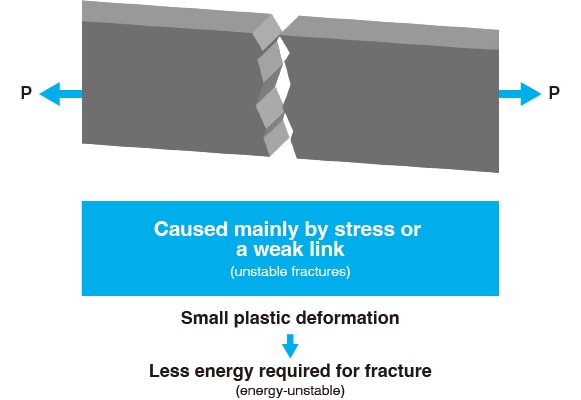
Brittle fractures appear differently depending on the degree of stress concentration. These changes can also be used to identify the cause of fractures.
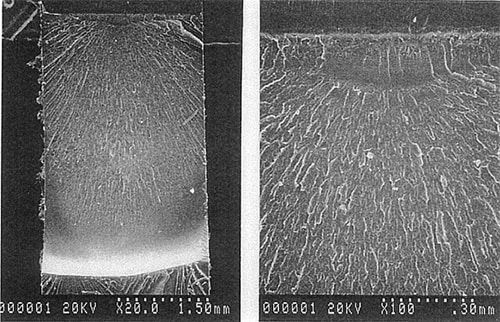
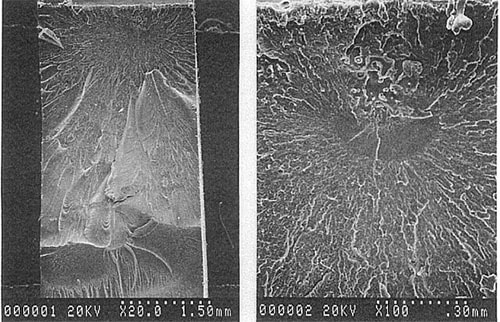
Note: River patterns (named because they resemble a flowing river) are caused by crack propagation. They are characterized by spreading radially from the crack area, so you can identify the crack area by searching for the region at which they converge.
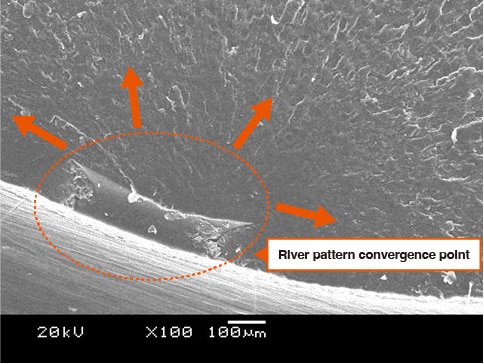
Ⅲ. Fatigue fractures
• After repeated loads, a cross-sectional reduction associated with crack onset and development leads to fracturing
• Since plastic deformation is limited to the proximity of the crack progression path, it has a brittle appearance
• The characteristic shape of these fractures is called striation
Ⅳ. Creep ruptures
・Deformation occurs over time when under constant load stress, leading to fractures (especially at high temperatures)
・Fine stretching is observed in the resin
Ⅴ. Solvent cracking
・Cracking occurs due to stress and environmental factors (chemicals, etc.)
・Also called environmental stress cracking, chemical cracking, etc.